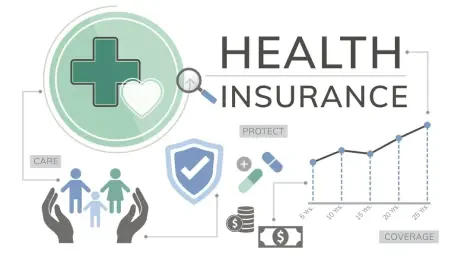Navigating the evolving landscape of healthcare benefits as a federal employee or retiree can feel like a daunting task, especially with major updates on the horizon for the Federal Employees Health Benefits (FEHB) program in 2026. With an average premium increase of 12.3% looming, alongside varied impacts across different plans and enrollment options, understanding these shifts is vital for making informed decisions about coverage. This substantial hike, coupled with factors like an aging workforce and rising prescription drug costs, signals a challenging year ahead for many. Beyond premiums, government contributions, plan-specific changes, and the stability of dental and vision plans under the Federal Employees Dental and Vision Insurance Program (FEDVIP) all play a role in shaping out-of-pocket expenses. As Open Season approaches from November 10 to December 8, 2026, being equipped with detailed insights into these developments ensures that federal workers and annuitants can strategically manage their healthcare budgets and select the most suitable options for their needs.
Unpacking the Premium Surge for 2026
The most striking change for FEHB enrollees in 2026 is the average premium increase of 12.3%, marking the second consecutive year of double-digit growth. This jump stands in stark contrast to the more modest 3.8% rise seen just a few years ago, reflecting a troubling trend for federal employees and retirees. The Office of Personnel Management (OPM) attributes this escalation to several underlying factors, including an aging federal workforce that faces a higher prevalence of chronic conditions. Additionally, the increased use of expensive prescription medications, such as GLP-1 drugs for weight loss, contributes significantly to the cost burden. For many, this sharp rise could strain household budgets, making it essential to look beyond the headline number and assess how specific plans are affected. Understanding these driving forces provides a clearer picture of why costs are climbing and sets the stage for evaluating personal impacts.
While the average premium hike paints a broad picture of financial pressure, the reality for individual enrollees depends heavily on their chosen plan. Of the 129 FEHB plans available in both the current year and 2026, outcomes vary widely: 23 plans will see a decrease in self-only premiums, 57 will experience increases below the 12.3% average, and 49 will surpass it. For example, enrollees in Kaiser Permanente High in Georgia could benefit from an 18% reduction, saving approximately $727 annually. On the flip side, the Panama Canal Benefit Plan faces a staggering 139% increase, adding $4,622 to yearly costs for a small subset of employees. These disparities highlight the importance of diving into the details of each plan’s adjustments. Federal workers and retirees must prioritize reviewing their specific coverage to determine whether they face a manageable change or a significant financial hit.
Analyzing Popular Plan Options
Blue Cross Blue Shield (BCBS) plans, which cover roughly two-thirds of federal employees, deserve special attention due to their widespread enrollment. In 2026, premium changes across BCBS offerings are mixed, with the Standard option increasing below the 12.3% average, while Basic and FEP Blue Focus see hikes above it. The Standard plan differentiates itself with unique benefits, such as coverage for out-of-network providers and in-vitro fertilization support up to $25,000 per year. However, these perks come at a cost, and switching to a more affordable option like FEP Blue Focus could yield substantial savings—potentially up to $7,792 annually for families. For those currently enrolled in BCBS, evaluating whether the additional benefits justify the expense will be a critical decision point during the upcoming enrollment period.
Beyond the cost variations, the diversity in BCBS plan structures offers opportunities for federal employees to optimize their coverage. While the Standard plan’s benefits might be indispensable for some, others may find that the Basic or FEP Blue Focus plans meet their needs at a lower price point. This decision requires a careful comparison of healthcare usage patterns, such as the frequency of out-of-network care or specific medical treatments. Additionally, the potential savings from switching plans underscore the value of reassessing long-standing choices, especially in a year marked by significant premium increases. As Open Season nears, taking the time to analyze these popular plans against personal health requirements can lead to more cost-effective coverage without sacrificing essential benefits.
Navigating Enrollment Decisions for Couples
For two-person households, such as married couples among federal employees or retirees, the type of enrollment chosen in 2026 can have a notable impact on costs. Typically, self-plus-one coverage is the more economical choice compared to self-and-family plans. However, a closer look reveals that 39 FEHB plans offer lower premiums for self-and-family, and nine have identical costs for both options. A striking example is Kaiser High in the D.C. area, where opting for self-and-family could save enrollees $1,738 each year. This variability means that assumptions about the cheapest option might not always hold true, and overlooking these differences could result in unnecessary expenses. Reviewing plan brochures during Open Season becomes a crucial step for couples aiming to minimize their healthcare spending.
The complexity of enrollment choices for two-person families extends beyond just premium costs to include considerations of coverage needs and future planning. For instance, while self-plus-one might seem sufficient for current health requirements, a self-and-family plan could offer broader protection or better value if circumstances change. Federal employees in this category should also factor in the specific benefits tied to each enrollment type within their chosen plan, as some may provide additional perks under one option over the other. With the potential for significant savings or overpayments at stake, dedicating time to compare these configurations is a practical approach. As the 2026 enrollment window approaches, leveraging available resources to make an informed choice will help ensure that costs align with actual needs.
Government’s Role in Premium Support
A key factor influencing out-of-pocket expenses for FEHB enrollees is the government’s contribution to premiums, which follows a structured formula. In 2026, the government covers either 72% of the weighted average across all plans or 75% of the selected plan’s total premium, whichever amount is smaller. This means that for 66 of the 132 self-only plans, including widely used options like BCBS FEP Blue Focus and GEHA Standard, enrollees benefit from the maximum 75% contribution. However, for higher-cost plans such as Aetna Open Access High Option in Northern New Jersey, the government’s share might drop to as low as 27%, leaving enrollees to shoulder a larger portion of the expense. Understanding where a specific plan falls on this spectrum is essential for anticipating true costs.
The variation in government contributions adds another layer of complexity to selecting the right FEHB plan. For those enrolled in plans receiving the full 75% support, the financial burden of premium increases may feel less severe, even with the 12.3% average hike. Conversely, individuals tied to plans with minimal government backing face a steeper challenge, as their personal contributions rise disproportionately. This disparity emphasizes the need to consider not just the premium itself, but also the net cost after accounting for the government’s share. As federal employees and retirees prepare for 2026, factoring in this support level during plan evaluations can guide them toward options that offer the best balance of coverage and affordability, particularly for those on tighter budgets.
Supplemental Coverage Stability
In contrast to the turbulent shifts within FEHB premiums, the Federal Employees Dental and Vision Insurance Program (FEDVIP) presents a more stable outlook for 2026. Premiums for dental plans under FEDVIP are set to increase by an average of just 3.3%, while vision plans will see a minimal rise of 0.5%. This relative predictability stands out as a silver lining amidst the broader healthcare cost challenges, ensuring that supplemental coverage remains a less burdensome expense. For federal workers and retirees who rely on these plans for essential dental and vision care, the modest adjustments mean one less area of significant financial concern, allowing greater focus on addressing FEHB-related decisions.
The stability of FEDVIP premiums also serves as a reminder that not all aspects of federal benefits are subject to dramatic fluctuations. While FEHB changes demand immediate attention due to their scale and impact, the steadiness of dental and vision costs offers a degree of reassurance. This contrast can influence how enrollees prioritize their healthcare planning, potentially allocating more time and resources to navigating the complexities of medical coverage. Moreover, for those balancing multiple types of benefits, the predictability of FEDVIP expenses simplifies budgeting efforts. As the Open Season period draws closer, recognizing this area of consistency can provide a small but meaningful sense of control over overall healthcare costs in 2026.
Strategizing for Open Season Success
As the Open Season window from November 10 to December 8, 2026, approaches, federal employees and retirees must adopt a proactive mindset to manage the impact of FEHB changes. Reviewing premium adjustments across plans is a critical first step, ensuring that enrollees understand whether their costs will rise above, below, or align with the 12.3% average. Beyond raw numbers, assessing in-network providers, prescription drug coverage, and unique benefits becomes essential for identifying better value. Targeting plans with the maximum 75% government contribution proves to be a smart tactic for minimizing out-of-pocket expenses. This period of evaluation is not just about reacting to increases but about strategically aligning coverage with personal health needs.
The emphasis during Open Season should be on leveraging available tools and resources to make informed choices. Comparing enrollment options, especially for two-person households, can help many avoid overpaying by selecting the most cost-effective type. The stability of FEDVIP premiums also allows enrollees to focus their energy on FEHB decisions without the added worry of supplemental cost spikes. For future planning, staying updated on OPM announcements and utilizing guides like Consumers’ Checkbook for federal health plans can continue to aid in navigating annual changes. The key takeaway for 2026 is clear: proactive engagement during Open Season remains a powerful way to balance rising costs with quality coverage.









